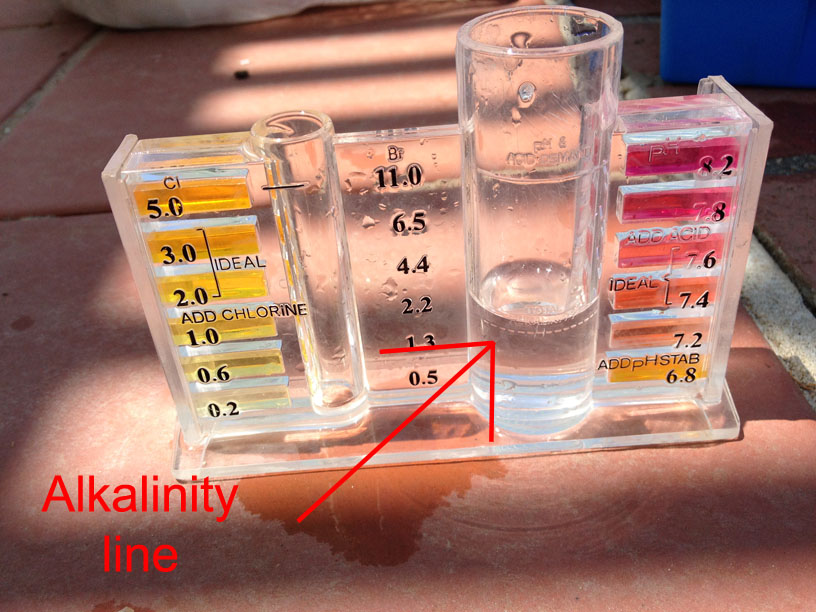The Secret to Perfect Water: Part 2
Apr 11, 2017
Once pool or spa water has been treated at fill up then it must be tested weekly to achieve complete balance. Two important balance tests are Total Alkalinity and pH. Many people get these two confused, which this can lead to improper treatment and use of the wrong chemicals to adjust. In The Secret to Perfect Water: Part 1, we covered balance being the key to swimming pools + spas functioning well and looking great. Now the question becomes, “What is the role of Total Alkalinity and pH to achieve balanced water?” Read on to find out.
First let’s take Total Alkalinity. The definition of total alkalinity is the buffering capacity of water. This means that total alkalinity in the proper range gives pool or spa water the ability to absorb differing pool chemicals with little to no effect on the pH. The ideal levels for total alkalinity are 80 – 120 ppm. When the total alkalinity is too low then the pH will be very erratic spiking high and dropping low depending on what chemicals are added. The lack of sufficient alkalinity buffer makes the pH much more subject to reaction based on the chemical added. Add an acid and the pH will drop too low, add a base and it will spike high. Any problem with pH is usually tied to improper total alkalinity reading. So, always adjust total alkalinity first and check and adjust it as needed whenever there is a pH problem.

To raise total alkalinity, sodium bicarbonate must be used. It takes 1.4 pounds of sodium bicarbonate to increase total alkalinity 10 ppm in 10,000 gallons of water. The sodium bicarbonate should be diluted in a bucket of water and poured slowly across a wide area of the pool in the deep end. For hot tubs or spas sodium bicarbonate can also be used at a rate of 1 ounce for every 300 gallons. Total alkalinity that is too high can lead to cloudy water and the formation of scale on surfaces and equipment. High total alkalinity will also make chlorine sanitizer less effective. To lower high total alkalinity use muriatic acid. Again this should be diluted in a bucket of water and the acid should be added in pockets throughout the pool. So, add a little of the acid in one spot, then move to another spot and add a little more. It takes 26 fluid ounces of muriatic acid to lower total alkalinity by 10 ppm in 10,000 gallons of water.
For hot tubs or spas a dry acid known as sodium bisulfate should be used at a rate of 1 ounce for every 300 gallons. After adding chemicals to adjust total alkalinity the water should be re-tested after an hour to confirm proper readings. Once the total alkalinity is adjusted properly the pH may be tested as well in many cases adjusting the total alkalinity also causes the pH to come into line. In some cases if the pH needs adjusting it will be easier and take less chemicals.
Next we will look at TDS (total dissolved solids) and help determine how often pools should be drained.
Until then…

